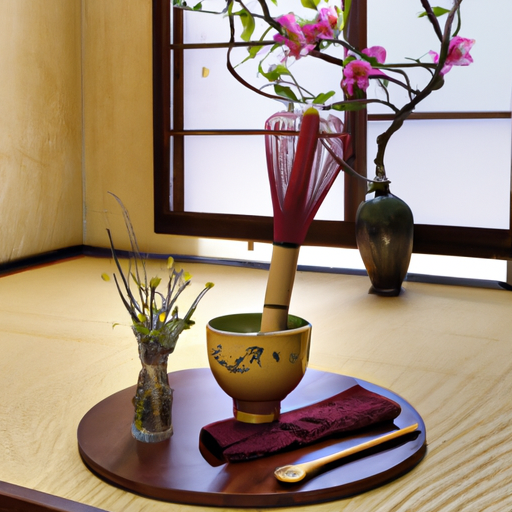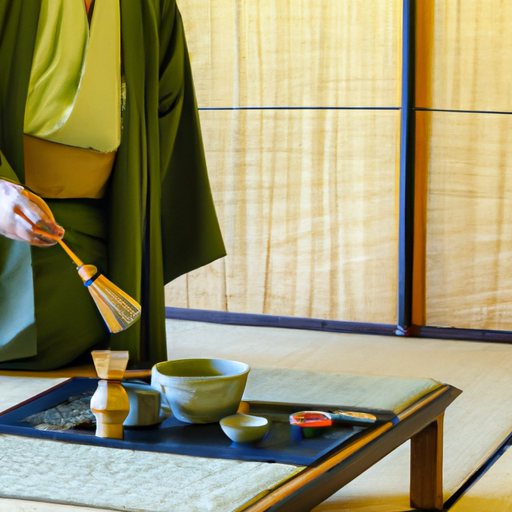Delve into the profound traditions and philosophical elements of the Japanese tea ceremony, where every gesture carries deep meaning. Explore how this centuries-old practice reflects Japanese values of hospitality, mindfulness, and aesthetic appreciation. Learn how the ceremony continues to influence modern Japanese society and global perspectives on mindfulness.

The Japanese tea ceremony, known as chanoyu or sadō, represents far more than the simple act of serving tea. This centuries-old practice embodies fundamental principles of Japanese philosophy, aesthetics, and social interaction, offering profound insights into the culture's emphasis on mindfulness, respect, and the appreciation of transient beauty.
The historical development of the tea ceremony traces back to the 9th century when tea was first introduced to Japan from China. However, it was during the 16th century that Sen no Rikyū refined the practice into its current form, emphasizing the principles of harmony (wa), respect (kei), purity (sei), and tranquility (jaku). These principles continue to guide every aspect of the ceremony, from the arrangement of the tea room to the movements of the host.
The physical space of the tea ceremony, the chashitsu, is designed with intentional simplicity. Traditional tea rooms feature tatami mat flooring, minimal decoration, and a small entrance called nijiriguchi that requires guests to bow as they enter, symbolically leaving the outside world behind. This architectural design reflects the Buddhist concept of non-attachment and the importance of being present in the moment.
The preparation for a tea ceremony begins long before guests arrive. The host carefully selects each implement based on the season, occasion, and guests' status. The placement of the fire pit, the arrangement of flowers in the tokonoma alcove, and even the selection of the hanging scroll all contribute to creating an atmosphere that encourages contemplation and appreciation of subtle beauty.
The ceremony itself follows a precisely choreographed sequence of movements, each refined over centuries to eliminate unnecessary elements while maintaining grace and efficiency. The cleaning of utensils, the whisking of matcha powder with hot water, and the presentation of the tea bowl all become acts of meditation, both for the host and the guests.
The concept of ichi-go ichi-e (one time, one meeting) is central to the tea ceremony. This philosophy emphasizes that each gathering is unique and can never be replicated, encouraging participants to fully appreciate the present moment. This mindset has influenced various aspects of Japanese culture, from business practices to social interactions.
The seasonal aspects of the tea ceremony demonstrate Japanese culture's deep connection to nature. The choice of tea bowls, sweets, and decorative elements all reflect the current season, helping participants remain mindful of nature's cycles and the beauty of impermanence. This attention to seasonality has influenced Japanese aesthetics across various art forms.
The role of the host extends beyond technical expertise in tea preparation. They must possess deep knowledge of various arts, including ceramics, calligraphy, flower arrangement, and architecture. This comprehensive understanding allows them to create harmony between all elements of the ceremony, making each gathering a complete artistic expression.
Guests also play an active role in the ceremony, following established etiquette that includes specific phrases, movements, and expressions of appreciation. The interaction between host and guests exemplifies the Japanese concept of omotenashi, a unique approach to hospitality that emphasizes selfless service and mutual respect.
The sweets served during the ceremony, called wagashi, are more than mere confections. Their designs reflect seasonal themes and complement the tea's bitter taste. The act of consuming these sweets becomes an exercise in mindful eating, encouraging appreciation of subtle flavors and artistic presentation.
In modern Japan, the tea ceremony continues to evolve while maintaining its core principles. Contemporary practitioners find new ways to make the tradition relevant to current lifestyles while preserving its essential elements of mindfulness and respect. Some tea schools now offer abbreviated ceremonies or modern settings while maintaining the ceremony's philosophical foundations.
The global influence of the Japanese tea ceremony extends beyond Japan's borders, contributing to worldwide interest in mindfulness practices and aesthetic appreciation. The ceremony's principles have inspired various modern movements, from minimalist design to slow living philosophies, demonstrating its continued relevance in addressing contemporary challenges of fast-paced, technology-driven lifestyles.
Understanding the tea ceremony provides valuable insights into Japanese culture and offers universal lessons about the importance of presence, attention to detail, and finding beauty in simplicity. As global interest in mindfulness and traditional practices grows, the tea ceremony stands as a testament to the enduring value of cultivating awareness and appreciation in everyday life.



